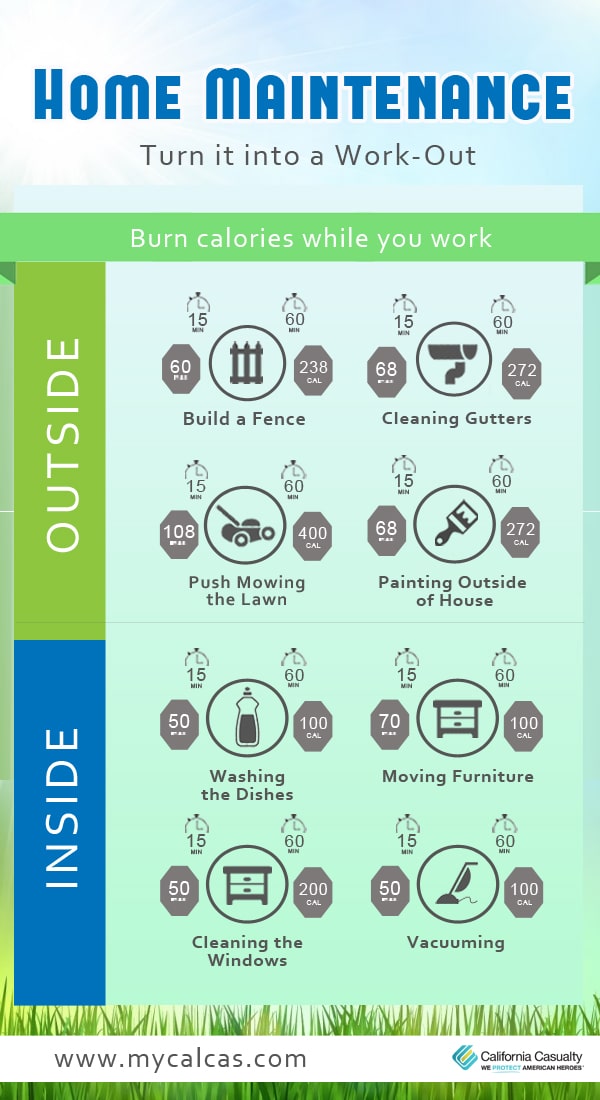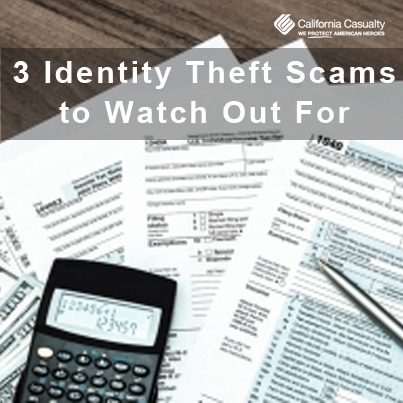by California Casualty | Safety |
 Child safety seats save lives. Protecting infants while riding in a car isn’t just a responsibility, it’s the law. Every state in the nation requires children up to three years of age to be secured in car seats, with booster seats required for most children up to 10 years old. Keep in mind that the risk of injury in a crash is reduced 45 percent if children are properly restrained. But how do you know which do the best job of cocooning your most precious cargo?
Child safety seats save lives. Protecting infants while riding in a car isn’t just a responsibility, it’s the law. Every state in the nation requires children up to three years of age to be secured in car seats, with booster seats required for most children up to 10 years old. Keep in mind that the risk of injury in a crash is reduced 45 percent if children are properly restrained. But how do you know which do the best job of cocooning your most precious cargo?
Consumer Reports has identified the five best car seats for your baby. All five performed well in new front impact tests that simulated a 35 mile per hour crash and scored well for ease-of-use. The new testing procedure is said to provide parents with the information needed to more easily compare the safety of seats designated for infants.
The recommended car seats are:
- Chicco KeyFit and KeyFit 30
- Combi Shuttle
- Cybex Aton 2
- Safety 1st onBoard 35 Air
- UPPAbaby Mesa
Since the cost of these seats range from $150-to-$300, Consumer Reports lists others that cost slightly less but still perform well overall:
- Safety 1st Comfy Carry Elite Plus
- Graco SnugRide 30 Classic Connect
The Insurance Institute for Highway Safety (IIHS) also does extensive testing for their booster seat best picks for parents and grandparents. However, anyone who used the 2014 IIHS ratings should know that two of their best booster seat recommendations are now not recommended. The IIHS warns that initial testing on the Eddie Bauer Deluxe Highback 65 and the Safety 1st Summit 65 did not detect issues with the positioning of the shoulder belt. You can see their list here.
When you get the proper car seat, there are some other important facts to keep in mind:
- Nine out of 10 child car seats were found to be installed incorrectly
- Nearly half of all child car seats are not compatible with motor vehicle seats
- Many parents move their children out of booster seats too early
- Families continue to use old unsafe seats or ones that have been recalled
When installing a car safety seat you should:
- Always do so in the back seat, using the center most position
- Make sure to use the correct seat for your child’s age and size
- Keep infants in rear facing seats
- Secure the seat so it moves no more than one inch from side to side
Just as you want to do everything you can to protect your children, make sure you also have the best auto insurance protection with the discounts you deserve. Contact a California Casualty advisor today for a no- hassle policy review and comparison at 1.800.800.9410 or at www.calcas.com.
Sources for this article:
https://www.consumerreports.org/cro/news/2014/04/5-best-car-seats-for-your-baby/index.htm
https://www.ghsa.org/html/stateinfo/laws/childsafety_laws.html
https://www.iihs.org/iihs/ratings/child-boosters/best-bets
https://www.safercar.gov/parents/CarSeats/Car-Seat-Safety.htm
https://www.safetyandhealthmagazine.com/articles/12967-researcher-42-of-child-car-seats-not-compatible-with-vehicle-seats
by California Casualty | Health |
With spring time almost here, home maintenance can become a task added to the workload. But have you considered it being a work-out?
Whether you only have 15 minutes or an hour, here are some ways to burn those calories while working around the house.

Outside:
- Building a fence: 85 calories for 15 min / 340 calories for 60 minutes.
- Cleaning gutters: 68 calories for 15 min / 272 calories for 60 minutes.
- Push mowing the lawn: 108 calories for 15 min / 400 calories for 60 minutes.
- Painting outside of the house: 68 calories for 15 min / 272 calories for 60 minutes.
Inside:
- Washing the dishes: 100 calories for 60 minutes.
- Moving furniture: 100 calories for 25 minutes.
- Cleaning the windows: 100 calories for 30 minutes.
- Vacuuming: 100 calories for 60 minutes.
Getting a jumpstart on spring cleaning can not only tidy up things around the house, but also help get in shape. Do you have any house chores that you could add to this list? Let us know what you think by commenting below.
Sources:
https://news.health.com/2013/04/22/10-chores-that-burn-100-calories/
https://www.houserepairsyourself.com/?p=1306
by California Casualty | Homeowners Insurance Info |

Springtime; for many of us it means we can start hanging up the cold weather gear and begin getting out the gardening equipment. However, the pleasant change in weather can often lull us into a false sense of security. In fact, I’m reminded of the warning Julius Caesar was given, “Beware the Ides of March.”
So what does that warning have to do with you and me? While March marks the end of winter, it starts a dynamic time of year with a clash of late season cold fronts and warm gulf air leading to dangerous thunderstorms, flooding and even tornadoes.
Many scientists warn that between climate change and El Nino, we are facing some of the most extreme and unpredictable weather patterns ever seen: one of the worst droughts and fire seasons ever in California followed by torrential rains and heavy snows, record flooding in Texas, Missouri and South Carolina, rare deadly December tornadoes across the Midwest and South and unprecedented holiday warmth in the Northeast.
Maybe we should change Shakespeare’s line to “Beware the Ides of Spring.”
Springtime Dangers
Flooding
Flood season begins in spring as winter snow and ice melt. Severe thunderstorms can add tremendous amounts of water to the runoff, often inundating cities and towns located in flood zones.
Flooding is the most common and costly natural disaster in the United States, causing an average of $50 billion in economic losses each year. Anyone living in a low-lying area near a lake, river or stream should make sure they are protected. Homeowners and renters insurance don’t cover floods from rivers, streams, or other runoff; if you want your home and valuables protected, you need flood insurance that often has a 30 day waiting period.
Flooding caused by a damaged roof or broken water pipe is covered by most homeowners insurance. While it can happen any time of year, springtime thawing can be the culprit. Do you have enough coverage if water should destroy your valuable possessions? The Federal Emergency Management Agency estimates that just two inches of water can cause more than $10,000 for repairs and replacement of flooded items. Six inches of water can add up to more than $30,000.
Fires
While a house fire can happen any time of year, spring marks the start of wildfire season. More than 4,600 structures were destroyed by wildfires in 2015, 2,667 of those were homes or apartments.
Fuels, such as grasses and brush, start to dry out as temperatures warm. Before they become a threat to your home you should mow and trim back any grasses, trees or bushes to create a 30 foot defensible space. Don’t forget to move gas grills, firewood and other combustibles 15 to 30 feet away from your home. You can find more wildfire prevention tips here.
Tornadoes
The volatile mix of warm and cold usually results in tornadic activity. Almost every state has experienced a tornado, and if you live in the South, Midwest or points east you may have already taken these tornado preparedness actions:
- Identify a safe place in your house (basement, storm shelter or sturdy interior reinforced room on the lowest floor of the home
- Prepare an emergency kit with first aid supplies, food, water and sanitary needs (include important medicines, eye glasses, etc.)
- Practice tornado drills
Severe Thunderstorms
Thunderstorms are the top cause of insured loss each year in the United States due to high winds, large hail and dangerous lightning. When a thunderstorm approaches, immediately move indoors and away from windows and avoid electrical equipment and corded telephones. Preparations for severe thunderstorms are much the same as tornadoes.
How to Protect Your Property
Before wild weather has a chance to threaten your home, here are some key tips to help prevent damage:
- Check roofs and shingles for damage, lifting or other signs that they might leak
- Clean gutters and drain spouts and make sure they direct water away from your home’s foundation
- Look for loose boards, cracking or other damage on decks and porches to avoid tripping, falls or other hazards
- Inspect the exterior of your home for cracks, holes or exposed wood or siding that could allow water, insects or small wildlife to get in
- Make sure chimneys and vents are well sealed and sturdy to prevent water or wind damage
- Trim back trees and bushes, looking for weak or broken branches or other damage, to protect against them falling into roofs or siding
Check Your Insurance
Before a catastrophe strikes, the Insurance Information Institute says you should:
- Purchase homeowners or renters insurance
- Get flood insurance if you live in a flood prone area
- Review your policy so you understand your coverages (replacement costs, replacement of personal possessions, and additional living expenses)
- Make a full inventory of everything you own
After a Disaster
If the unexpected should occur, you should take these steps:
- Secure your property from further damage or theft
- Contact your insurance company as soon as possible
- Catalogue your losses and take pictures
- Save receipts of meals, purchases and hotels while you are unable to live at home
- Be careful of fraudulent contractors
Now is good time to reevaluate your protection against the unpredictable moods of spring; contact a California Casualty advisor to purchase flood insurance, get a review of your policy or add any coverage that you might need. Give a call today at 1.800.800.9410 or visit www.calcas.com.
Resources for this article:
https://news.yahoo.com/record-el-nino-climate-change-drive-extreme-weather-170109695.html;_ylt=AwrTcdtKdZVWbA8ATzMnnIlQ;_ylu=X3oDMTBya2cwZmh2BGNvbG8DZ3ExBHBvcwM1BHZ0aWQDBHNlYwNzcg–
https://www.floodsmart.gov/floodsmart/pages/flooding_flood_risks/the_cost_of_flooding.jsp
https://www.calcas.com/documents/10326/0/wildfire_pamphlet_residential_CA.pdf/4c476835-55f4-4a70-a208-0f7930218e90
https://www.nifc.gov/fireInfo/fireInfo_statistics.html
https://www.redcross.org/prepare/disaster/tornado
https://www.iii.org/article/making-sure-your-home-properly-covered-disaster
https://www.redcross.org/find-help/disaster-recovery/recovering-financially
by California Casualty | Educators |

Odds are you know Amelia Earhart, Rosa Parks, Susan B. Anthony or Clara Barton. But have you heard of Elizabeth Cady Stanton, an early pioneer in the suffragette movement; Janet Rankin, the first women elected to Congress; Memphis Minnie (born Lizzie Douglas) who became one of the top blues guitarists in the 1920s, through the 1950s or Delores Huerta, who co-founded the United Farm Workers Association with Cesar Chavez.

March is National Women’s History Month, with the goal of making us more aware of the women who changed American history, business and society. However, just like the right to vote, the push for a month recognizing the accomplishments of women took many years to become reality.
The seeds of the observation began in 1979, with roots in American education system. The week of March 8, 1978 was designated as Women’s History Week by the Education Task Force of the Sonoma County (California) Commission on the Status of Women. Dozens of schools planned special events and over 100 community women participated in special presentations in classrooms. The finale of the week was a celebratory parade and program held in downtown Santa Rosa.
A year later, other communities across the U.S. joined the celebration and agreed to support an effort for a National Women’s History Week, which was formally proclaimed by President Jimmy Carter in 1980.
Departments of education in many states adopted the celebration and encouraged curriculum to support the effort. Within a few years, thousands of schools and communities were celebrating National Women’s History Week. In 1987, Congress officially designated March as National Women’s History Month. This year’s theme is “Working to Form a More Perfect Union: Honoring Women in Public Service and Government.”
Since it gained traction in schools and classrooms, California Casualty’s education guest author Alan Haskvitz has assembled this list of some of the best resources for celebrating Women’s History Month for teachers and students:
Women in history is a topic that is rich in high interest stories and Common Core related standards. Possible integrated lessons can stress diversity, art, history, science and more. Just as importantly is the fact that the stories are compelling and often show the human spirit at its best, when facing challenges that require strength of character as well as determination.
With such a diverse range of options, I like having my students share their reading and research to cover more facts and also to motivate them to read about those women they may never have heard of before. Here is a list of 100 famous women; some may not be appropriate for every grade level, but there are enough to make for some excellent compare and contrast essays. Another fun project, after the presentations and to increase interest and listening skills, is to have the students collect facts about some of these and play 20 questions to see if they can guess who the name of the woman from the clues.
https://www.angelfire.com/anime2/100import/
- Women authors who changed history
https://mikeswritingworkshop.blogspot.com/2011/03/25-female-writers-who-changed-history.html
A great story about a woman who was the first computer programmer:
https://www.biography.com/people/ada-lovelace-20825323
https://www.infoplease.com/us/military/women-history.html
- National History W omen’s Project
A list of the 2014 honorees:
https://www.nwhp.org/whm/honorees2012.php
- Pioneering Women in American Memory
A good source of primary source material:
https://www.loc.gov/teachers/classroommaterials/presentationsandactivities/presentations/women-pioneers/
- 25 Most Powerful Women of the Past Century
https://content.time.com/time/specials/packages/completelist/0,29569,2029774,00.html
- Common Core reading standards
https://www.corestandards.org/ELA-Literacy/RI/8
About the Author: Alan Haskvitz has taught for 45 years and has credentials in special education, gifted education school administration, and all core subjects. He has been inducted into the National Teachers Hall of Fame and was chosen by Reader’s Digest as a Hero in Education. Contact him at [email protected]
by California Casualty | Safety |

Do you know anyone, other than an accountant, who really enjoys filing their tax returns? As if it isn’t stressful enough assembling all the documents, trying to decipher the forms and double checking the math, there is a new concern – tax fraud and identity theft. The IRS has noted a 400 percent surge in phishing and malware incidents this year, and the Treasury Inspector General estimates fraudulent returns will add up to $21 billion dollars in 2016.
Once again the IRS is warning that thousands of us are at risk. Most won’t find out until they file their taxes and get notified that someone has already used their Social Security number to claim a false refund. This will result in all kinds of headaches and delay their legitimate return.
Here are the top three of the IRS’s “Dirty Dozen” list of tax scams:
- Aggressive phone callers saying they are from the IRS threatening immediate arrest, deportation or license revocation unless you settle an outstanding balance via wire transfer or preloaded debit card
- Fake emails purporting to be from the IRS (or TurboTax) asking for “missing” personal information to secure your refund, or directing you to links that contain malware
- Fraudulent tax return preparers who use your personal information to perpetrate refund fraud, identity theft and other scams
To battle the problem, the IRS has published these tax-time security tips:
- Keep computers protected with strong passwords and strong virus/malware protection
- Avoid phishing scams: don’t respond to emails, tweets or phone calls asking for personal information or payment – the agency never initiates contact via phone, email, text or electronic media
- Don’t open attachments in emails unless you’re sure who sent it and why
- File returns early and do so electronically
- Choose your tax preparer carefully and ask if they have an IRS Preparer Tax Identification Number
- Never carry your Social Security card in your purse or wallet
If you receive a suspicious email message, the IRS asks that you forward it to them at [email protected]. They ask that you report IRS-impersonation calls at www.tigta.gov
While the IRS has instituted new programs and resources to try and prevent tax ID theft, they warn that crooks continue to find new, more sophisticated ways to capitalize on our money. That’s why they have a comprehensive list of information about tax-time identity theft and helpful links at https://www.irs.gov/uac/Identity-Protection.
These are signs that you could be a victim of tax-related identity theft:
- More than one tax return was filed using your SSN
- You are notified you owe additional tax, have a refund offset or had collection actions taken against you for a year you did not file a tax return
- IRS records indicate you received wages or other income from an employer you never worked for
And, if it happens to you it can be costly in both time and money. A Bureau of Justice Statistics survey found the average loss per ID theft victim was $1,343, and most spent at least a full day to clear up the issue, however some didn’t see a resolution for months.
Nobody has time for that. That’s why California Casualty provides free ID theft protection with every auto and home insurance policy. Through our partners at IDT911, not only is your identity and personal information protected, but you’ll work with a resolution specialist in case of:
- Tax Fraud
- Social Media Compromise
- Email Compromise
- Child Identity Theft
- Break-in Recovery
- Travel Identity Theft
- Much More
Contact a California Casualty advisor today for a free auto and home insurance policy review and learn about our free ID theft protection at 1.800.800.9410 or visit www.calcas.com/identity-theft.
Sources for this article:
https://www.irs.gov/uac/Newsroom/Consumers-Warned-of-New-Surge-in-IRS-Email-Schemes-during-2016-Tax-Season-Tax-Industry-Also-Targeted
https://www.irs.gov/pub/irs-pdf/p4524.pdf
https://www.irs.gov/uac/Newsroom/IRS-Wraps-Up-the-Dirty-Dozen-List-of-Tax-Scams-for-2016
https://www.consumer.ftc.gov/articles/0008-tax-related-identity-theft
https://www.bjs.gov/content/pub/pdf/vit14.pdf
 Child safety seats save lives. Protecting infants while riding in a car isn’t just a responsibility, it’s the law. Every state in the nation requires children up to three years of age to be secured in car seats, with booster seats required for most children up to 10 years old. Keep in mind that the risk of injury in a crash is reduced 45 percent if children are properly restrained. But how do you know which do the best job of cocooning your most precious cargo?
Child safety seats save lives. Protecting infants while riding in a car isn’t just a responsibility, it’s the law. Every state in the nation requires children up to three years of age to be secured in car seats, with booster seats required for most children up to 10 years old. Keep in mind that the risk of injury in a crash is reduced 45 percent if children are properly restrained. But how do you know which do the best job of cocooning your most precious cargo?




